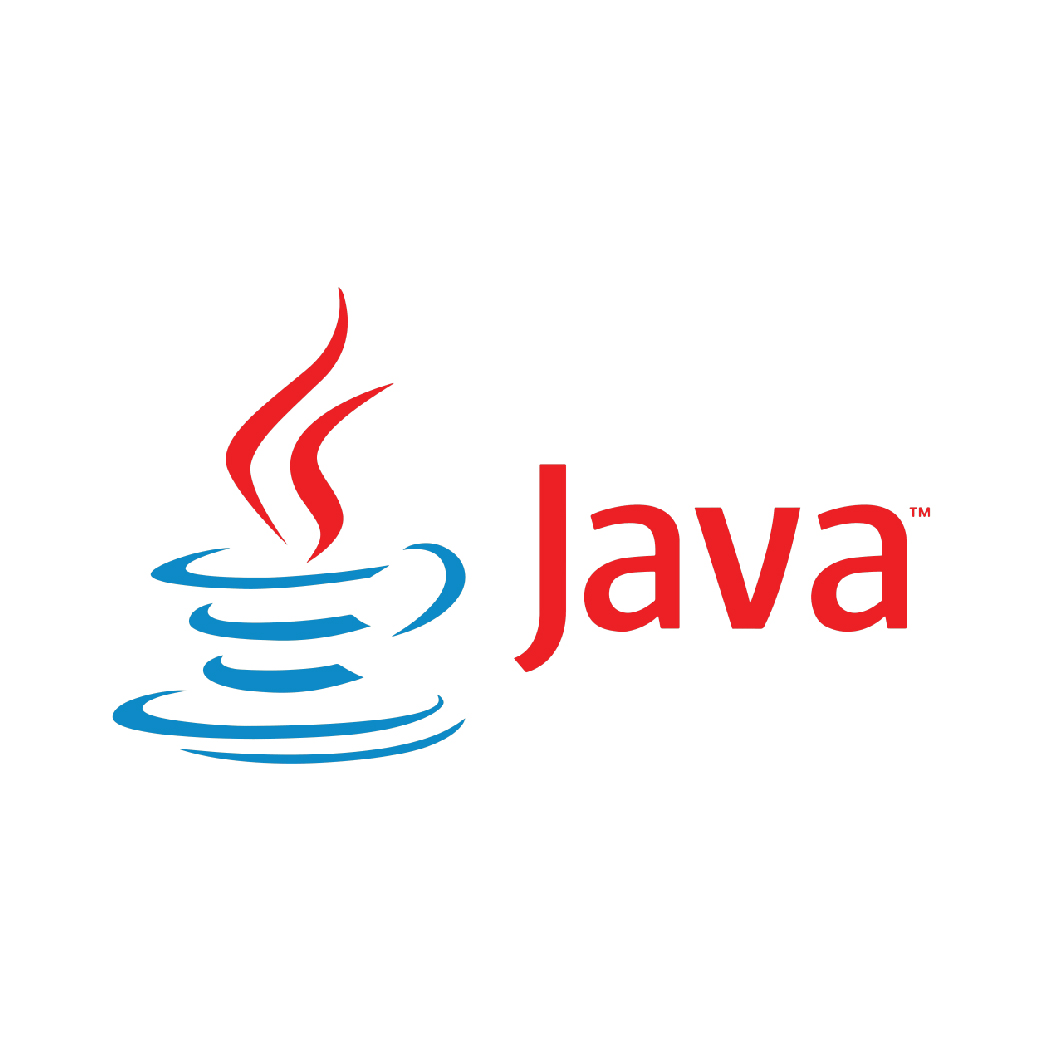Java Enterprise-Level Applications
Powering the Business World: Unlocking the Potential of Java for Enterprise-Level Applications

Everything you need to know about
Java Enterprise-Level Applications
In software development, enterprise-level applications are the backbone of many large-scale organizations. These applications are designed to handle complex business processes, manage vast data, and provide reliable and scalable solutions. With its robustness, versatility, and extensive ecosystem, Java has emerged as one of the top choices for building enterprise-level applications. In this article, we will explore the critical characteristics of Java enterprise applications and how they empower organizations to deliver efficient and scalable software solutions.
Java Enterprise-Level Applications Scalability
Scalability is a crucial aspect of enterprise applications as they must handle high user loads, process large volumes of data, and seamlessly adapt to changing business needs. Java provides various tools and frameworks that enable developers to build scalable applications. The Java Virtual Machine (JVM) offers built-in support for multi-threading, allowing applications to utilize system resources efficiently. Additionally, Java’s extensive ecosystem provides frameworks like Spring, which offers features like dependency injection and aspect-oriented programming that aid in building scalable applications. These features help Java enterprise applications handle increasing user demands and scale horizontally by adding more servers to the infrastructure (1).
“Scalability is the capacity for something to be changed in size or scale. In technological terms, it is the versatility with which a computing method can be applied or produced. Java is used to build applications that are easy to handle any growing workload.”
– Hackread
Our Executive Team

Common Industries we provide Java Enterprise-Level Applications:
Healthcare & Life Sciences
SaaS & Information Services
Manufacturing
Financial Services & FinTech
Retail & E-Commerce
Insurance
Logistics & Automotive
Travel & Hospitality
You need to know:
Java Enterprise-Level Applications
Java Enterprise-Level Applications Reliability
Enterprise applications often deal with critical business operations, such as financial transactions, inventory management, and customer data handling. Therefore, reliability is of utmost importance. Java’s robustness and stability make it an excellent choice for developing reliable enterprise applications. The language’s robust type-checking, exception-handling mechanism, and automatic memory management through garbage collection reduce the likelihood of runtime errors and memory leaks. Furthermore, Java’s extensive testing frameworks, such as JUnit, facilitate the creation of comprehensive test suites, ensuring that the application behaves as expected in different scenarios.
Java Enterprise-Level Applications Security
Security is a primary concern for enterprise-level applications, as they handle sensitive data and interact with various internal and external systems. Java provides robust security features to protect against common vulnerabilities and attacks. The Java Security Manager enables fine-grained access control to restrict untrusted code from accessing sensitive resources. The Java Authentication and Authorization Service (JAAS) provide a flexible framework for implementing authentication and authorization mechanisms. Moreover, Java’s SSL/TLS support ensures secure communication between different components of an application. Leveraging these security features allows Java enterprise applications to meet stringent security requirements.


Common Industries we provide Java Enterprise-Level Applications:

COST-EFFECTIVE DEVELOPERS
Our Software Developers and Engineers cost
on average $45 to $65 per hour

HIGHEST QUALITY DEDICATED TEAMS
Access to the TOP 1% of Nearshore Software Development resources in Latin America

TIME SENSITIVE DEVELOPMENT
Sonatafy’s Nearshore Talent Acquisition can place qualified Software Engineering teams in as quick as 2 weeks
When Should use
Java Enterprise-Level Applications
Java’s performance has significantly improved, thanks to advancements in the Java Virtual Machine and optimization techniques. The Just-In-Time (JIT) compiler optimizes the bytecode at runtime, resulting in faster execution. Furthermore, Java’s support for native compilation through projects like GraalVM allows developers to achieve even higher performance levels. Additionally, the availability of profiling tools and performance-tuning options empowers developers to optimize their applications for specific workloads, ensuring efficient resource utilization.
Software Maintainability
Enterprise applications typically have long lifecycles and require frequent updates and enhancements. Java’s object-oriented nature and modular design principles contribute to the maintainability of enterprise applications. Java’s support for encapsulation, inheritance, and polymorphism allows developers to write clean and modular code, making it easier to understand, maintain, and extend the application over time. Java’s ecosystem also provides a wide range of development tools, integrated development environments (IDEs), and build systems that enhance the maintainability of enterprise applications. These tools, such as Eclipse, IntelliJ IDEA, and Apache Maven, offer features like code refactoring, automated testing, and dependency management, which streamline the development process and promote code maintainability.

Interested In Working With Sonatafy?
Community and Support
For Java Development
Java has a vast and active community of developers worldwide, contributing to its strength as an enterprise-level application development platform. The community-driven approach ensures continuous improvement, innovation, and the availability of open-source libraries and frameworks. Developers can seek help from the community through forums, discussion boards, and online resources, which accelerates problem-solving and knowledge sharing. Additionally, Oracle, the primary steward of Java, provides regular updates, security patches, and technical support, ensuring the long-term support and stability of Java enterprise applications.
Cloud-Native Capabilities
In recent years, the cloud computing paradigm has gained significant popularity, and organizations are increasingly migrating their applications to the cloud. Java has embraced the cloud-native approach with frameworks and tools that facilitate the development of cloud-ready applications. Java frameworks like Spring Boot provide out-of-the-box support for building microservices-based architectures, containerization with technologies like Docker, and deployment on cloud platforms like Kubernetes. This enables organizations to leverage cloud environments’ scalability, flexibility, and cost-effectiveness for their enterprise applications.
Enterprise Java Standards
The Java Enterprise Edition (Java EE), now known as Jakarta EE, is a set of specifications and APIs that define the standards for building enterprise applications (2).
“It is a set of specifications wrapping around Java SE (Standard Edition). The Java EE provides a platform for developers with enterprise features such as distributed computing and web services. Java EE applications are usually run on reference run times such as microservers or application servers.”
– Javat Point
These standards ensure interoperability and portability across different Java EE-compliant application servers. Jakarta EE provides specifications for web services, servlets, messaging, persistence, and more, making it easier for developers to build enterprise applications that adhere to industry best practices and standards. Adopting Jakarta EE ensures that enterprise applications can be easily maintained and migrated across different platforms without vendor lock-in.
Future-Proofing: Java has stood the test of time and continues evolving to meet enterprise application development’s changing needs. The Java community actively contributes to the language’s evolution, addressing emerging trends and technologies. With the introduction of Java modules (Java 9 onwards) and the upcoming release of Project Loom, which aims to provide lightweight concurrency primitives, Java remains at the forefront of modern application development. By investing in Java enterprise applications, organizations can future-proof their software solutions and ensure compatibility and support for years.
Java is an exceptional choice for developing enterprise-level applications due to its scalability, reliability, security, integration capabilities, performance, maintainability, community support, cloud-native capabilities, adherence to standards, and future-proofing. Java’s robustness, versatility, and extensive ecosystem empower organizations to build scalable, efficient, and robust software solutions that meet the demanding requirements of modern enterprises. As technology advances, Java remains a reliable and solid foundation for developing enterprise applications, enabling organizations to drive innovation, improve productivity, and achieve business success.
Java Enterprise Application Development: A Comprehensive Guide
Java has long been the go-to programming language for developing enterprise-level applications. Its rich features, extensive libraries, and strong community support make it an excellent choice for building robust and scalable software solutions. This section will delve into the critical aspects of Java enterprise application development and explore the essential steps involved.
Requirements Gathering and Analysis: The first step in developing a Java enterprise application is understanding the business requirements and objectives. This involves working closely with stakeholders to identify their needs, document functional and non-functional requirements, and analyze the existing systems and processes. Detailed requirements gathering and analysis lay the foundation for successful application development.
Architecture and Design: The next step is to design the application’s architecture once the requirements are precise. Java enterprise applications often follow a layered architecture, such as the Model-View-Controller (MVC) pattern, separating the presentation, business logic, and data access layers. Design patterns like the Factory, Singleton, and Dependency Injection facilitate loose coupling, modular design, and maintainability. UML diagrams, such as class and sequence diagrams, aid in visualizing the application’s structure and interactions.
Development Tools and Frameworks: Java provides many tools and frameworks that simplify enterprise application development. Integrated Development Environments (IDEs) like Eclipse, IntelliJ IDEA, and NetBeans offer features like code completion, debugging, and project management. Frameworks like Spring, JavaServer Faces (JSF), and Java Persistence API (JPA) provide ready-to-use components, dependency injection, and database access capabilities, reducing development time and effort.
Database Integration: Most enterprise applications require interaction with databases to store and retrieve data. Java’s JDBC API allows developers to connect to various databases, execute SQL queries, and handle database transactions. Object-relational mapping (ORM) frameworks like Hibernate provide a higher-level abstraction over database operations, enabling developers to work with objects instead of raw SQL queries.
Business Logic Implementation: The business logic layer is where the application’s core functionality resides. Java’s object-oriented programming (OOP) features, such as classes, interfaces, and inheritance, facilitate the implementation of business rules and processes. Additionally, Java frameworks like Spring offer features like aspect-oriented programming (AOP), which enables developers to modularize cross-cutting concerns, such as logging, caching, and security.
User Interface Development: The user interface (UI) is crucial in enterprise applications, as it determines how users interact with the system. Java provides various options for UI development, including JavaFX, Swing, and JSF. These frameworks offer components, layouts, and event-handling mechanisms for creating intuitive and user-friendly interfaces. HTML5, CSS, and JavaScript can be combined with Java to develop web-based UIs.
Testing and Quality Assurance: Thorough testing is essential to ensure the reliability and quality of a Java enterprise application. Automated testing frameworks like JUnit and TestNG facilitate unit, integration, and system testing. Test-driven development (TDD) practices encourage writing tests before implementing the actual code, ensuring better code coverage and early bug detection. Additionally, tools like code analyzers and performance profilers assist in identifying and resolving potential issues.
Deployment and Infrastructure: Java enterprise applications are typically deployed on application servers or cloud platforms. Application servers like Apache Tomcat, JBoss, and IBM WebSphere provide the runtime environment for executing Java applications. Containerization technologies like Docker allow applications to be packaged as lightweight, portable containers. Cloud platforms, such as Amazon Web Services (AWS) and Microsoft Azure, offer scalable infrastructure for hosting and managing enterprise applications.
%
TOP NEARSHORE TALENT
%
ATTRITION RATE
%
ENGLISH PROFICIENCY
RESOURCES DEPLOYED
The Custom Java Software
Monitoring and Maintenance
Once the application is deployed, monitoring and maintenance are crucial to ensure smooth operation. That’s why it’s important to hire the right Java development company for your business. Java provides various tools and frameworks for monitoring application performance, identifying bottlenecks, and detecting errors. Logging frameworks like Log4j and SLF4J facilitate capturing application logs for troubleshooting and debugging purposes. Regular maintenance activities, such as applying security patches, updating dependencies, and optimizing performance, help keep the application running efficiently.
Continuous Integration and Deployment
Implementing continuous integration and deployment (CI/CD) practices are highly beneficial to streamline the development and release process. Tools like Jenkins and GitLab CI/CD automate the build, testing, and deployment processes, ensuring faster and more reliable software delivery. CI/CD pipelines can be configured to trigger automatic builds, run tests, and deploy the application to different environments, enabling efficient collaboration among developers and reducing manual errors.
Security Considerations
Security is critical to enterprise applications, as they handle sensitive data and interact with various systems. Implementing security best practices, such as input validation, proper authentication and authorization mechanisms, and encryption of sensitive data, is paramount. Java’s security features, as mentioned earlier, provide a robust foundation for building secure applications. Regular security audits and vulnerability assessments also help identify and address potential security risks.
Performance Optimization
Java enterprise applications often handle important data and user requests, making performance optimization essential. Techniques such as caching, database query optimization, and asynchronous processing can significantly improve application performance. Profiling tools like Java VisualVM and YourKit Java Profiler assist in identifying performance bottlenecks and optimizing code and resource usage.
Agile Development Methodologies
Adopting agile development methodologies, such as Scrum or Kanban, can enhance the efficiency and flexibility of Java enterprise application development. Agile practices promote iterative development, regular feedback, and continuous improvement. This approach enables faster delivery of value to stakeholders, adaptability to changing requirements, and better collaboration among team members (3).
“Agile development is an iterative methodology for software development that focuses on creating adaptive products. Projects take multiple iterations that each builds on the previous iteration and gradually approach the final product.”
– Educative
Documentation and Knowledge Sharing
Proper documentation is essential for maintaining and extending Java enterprise applications. Documenting the application architecture, design decisions, and implementation details helps new team members onboard quickly and ensures the longevity of the application. Additionally, creating internal knowledge bases, conducting code reviews, and organizing regular knowledge-sharing sessions foster a learning culture and continuous improvement within the development team.
Java enterprise application development requires a holistic approach, encompassing requirements gathering, architecture design, development, testing, deployment, and maintenance. Leveraging Java’s robustness, extensive ecosystem, and community support, developers can build scalable, secure, and high-performing software solutions for enterprise environments. By following best practices, adopting agile methodologies, and embracing modern development tools and frameworks, organizations can create Java enterprise applications that meet the complex and evolving needs of the business world.
Enterprise-Level Applications Company
Awards & Recognitions
Helping take our clients’ software development businesses to the next level has been quite an experience, and we are not slowing down any time soon. Providing a memorable experience and far surpassing our customers’ software development and solutions goals is one of the most rewarding experiences of our company to date.
We’re ready to start helping your company grow with our industry-leading custom software development solution, are you?

Earning Trust & Loyalty for our Software Development Services
Our executive team proudly provides complete software development solutions in the healthcare, SaaS, Manufacturing, and FinTech fields from deployment to completion.
Our client-centric software development solutions have made us the healthcare app development provider of choice for clients such as Akido Labs, Datacubed Health, Sema Technologies, and Semantic AI, among others. With thousands of software development engineers deployed to date, clients love our personalized high-touch approach.
With high-quality delivery web development services and strong customer support and management, we give you the ability to focus on business decisions rather than software development issues.
Sonatafy Technology services can dramatically
improve the Java Enterprise-Level Applications
Our Software Development Clients Have Spoken.

“We increased our productivity and quality by extending our team with Sonatafy resources. They are part of our ‘family’. Their passion, dedication, experience, and wisdom has been nothing short of impressive.”

“We have been using Sonatafy for software team augmentation. Their vetting process is extremely through and has saved us a huge amount of time. All of the candidates presented have been outstanding and have fit into our team perfectly.”

“The Sonatafy team consists of members who are dedicated, personable, and attentive. They will search tirelessly to match the right talent to meet your skills and budgetary requirements. Regardless of your situation, you cannot go wrong with Sonatafy.”

“The Sonatafy team has continually impressed us with the quality of their engineers — we have found excellent engineering leaders in their contractors who have helped tremendously. They really are an integral part of our team, and we’re very thankful for Sonatafy’s professional leadership in this space. I heartily recommend them to augment anyone’s teams or projects.”

“At IMAIGE Analytics, we are driven by purpose and outcomes. Sonatafy has been the exact type of partner we need to help us deliver on both. They’ve found solutions specific to our purpose and needs, their resources have contributed like long time team members from day one and they seem dedicated to progressively better outcomes from the start. Thanks to the team and to Steve for taking the time to make our business better!”

“The entire team at Sonatafy greatly surpassed our expectations. We require very specific skill sets and the team did an incredible job of screening and selecting top – notch candidates. Sonatafy’s attention to detail, professionalism, open communication, and collaboration with us ensured that we found highly skilled talent that fit seamlessly into our company’s culture. I can’t recommend them strongly enough.”

“Sonatafy makes it easy to find great and professional talent, with their help we have been able to solidify our team. Their process and communication is a refresher and a weight off our shoulders.”

I’ve used Sonatafy Technologies for the last 5 + years at several of my companies both small and large, in a staff augmentation capacity. I have been consistently impressed with the high – quality of technical skills as well as the team member’s high level of engagement and dedication to my projects. I’ve always considered my dedicated Sonatafy resources as members of my team , and their contributions and performance has been excellent. The combination of high performance and afford ability has been an outstanding benefit , and I would highly recommend using Sonatafy Technologies as your near shore technology partner.
Common Terms
Java Enterprise-Level Applications:
This topic overviews Java enterprise-level applications, explaining their significance in the software development landscape. It highlights the need for scalable, reliable, and secure applications to meet the demands of large organizations and complex business processes. Java’s suitability for enterprise development is introduced, setting the stage for further exploration.
Understanding the Key Concepts of Enterprise Application Development
This section dives deeper into enterprise application development’s fundamental concepts and principles. It explains the layered architecture commonly used in enterprise applications, such as the Model-View-Controller (MVC) pattern. Other essential concepts include separation of concerns, modularity, and loose coupling. The goal is to familiarize readers with the core concepts underpinning enterprise application development.
Benefits of Java for Enterprise-Level Applications
The article discusses the advantages of using Java for enterprise-level applications. It highlights Java’s robustness, scalability, platform independence, and extensive ecosystem. The critical benefits explored include the availability of mature frameworks and tools, strong community support, and long-term compatibility. This section aims to emphasize Java’s suitability for building enterprise-level applications (4).
“As stated above, the Java EE platform is designed to help developers create large-scale, multi-tiered, scalable, reliable, and secure network applications. A shorthand name for such applications is “enterprise applications,” so called because these applications are designed to solve the problems encountered by large enterprises.”
– Oracle
Java Enterprise Edition (Java EE) vs. Java Standard Edition (Java SE)
This topic clarifies the distinction between Java Enterprise Edition (Java EE) and Java Standard Edition (Java SE). It explains that Java SE is the foundation for all Java development. At the same time, Java EE extends Java SE with additional APIs and specifications specifically designed for enterprise applications. The article explores the main features and components of Java EE, emphasizing how it addresses the unique requirements of enterprise application development.
Building Scalable and High-Performing Applications with Java
Scalability and high performance are crucial for enterprise applications. This section delves into various strategies and techniques for building scalable and high-performing Java applications. It covers multi-threading, connection pooling, caching, asynchronous processing, and distributed computing. The aim is to provide readers with insights into how Java can be leveraged to build applications that can handle large workloads and deliver optimal performance.
Java Application Servers for Enterprise Development: Java application servers play a vital role in deploying and managing enterprise applications. This topic explores different Java application servers like Apache Tomcat, IBM WebSphere, and Oracle WebLogic. It explains their features, capabilities, and how they provide a runtime environment for Java enterprise applications. The article also discusses containerization technologies like Docker and cloud-based platforms for deploying Java applications.
Java Persistence API (JPA) and Object-Relational Mapping (ORM)
Data persistence is critical to enterprise applications. This section focuses on the Java Persistence API (JPA) and Object-Relational Mapping (ORM) frameworks, such as Hibernate and EclipseLink. It explains how JPA simplifies the mapping of Java objects to relational databases and provides a standardized approach to database access. The benefits of using ORM frameworks and typical usage patterns are also discussed.
Implementing Business Logic in Java Enterprise Applications
Business logic forms the core functionality of enterprise applications. This topic explores different approaches to implementing business logic in Java, such as using plain Java classes, frameworks like Spring, and Enterprise JavaBeans (EJB). It discusses the advantages and trade-offs of each approach. It provides examples of how business logic can be encapsulated and modularized within Java enterprise applications.
Java Messaging Services for Asynchronous Communication
Asynchronous communication is crucial for decoupling components and enabling scalability in enterprise applications. This section introduces Java Messaging Services (JMS) and explores how it enables reliable and asynchronous messaging between different application components. Topics covered include message queues, topics, message-driven beans, and integration with enterprise integration patterns.
Security and Authentication in Java Enterprise Applications
Security is paramount in enterprise applications. This topic delves into the importance of safety and authentication in Java enterprise applications. It discusses encryption, secure communication protocols, access control, user authentication, and authorization. The article explores Java’s built-in security features, such as the Java Authentication and Authorization Service (JAAS). It highlights best practices for implementing secure authentication mechanisms in Java applications.
Java Enterprise Integration Patterns and Technologies
Enterprise applications often need to integrate with various systems and services. This section explores different integration patterns and technologies available in the Java ecosystem. It covers messaging patterns, service-oriented architecture (SOA), and enterprise service bus (ESB). It also introduces popular Java integration frameworks and technologies like Apache Camel, Spring Integration, and Java Connector Architecture (JCA).
Web Services and APIs in Java Enterprise Development
Web services play a vital role in enterprise application integration and interoperability. This topic focuses on the development and consumption of web services in Java. It explains the different web service standards, such as soap and rest. It introduces technologies like Java API for XML Web Services (JAX-WS) and Java API for RESTful Web Services (JAX-RS). The article also covers service contracts, WSDL, and JSON serialization.
Monitoring, Logging, and Performance Tuning in Java Applications
Monitoring, logging, and performance tuning are essential for maintaining enterprise applications’ health and optimal performance. This section explores tools and techniques for monitoring Java applications, capturing and analyzing logs, and identifying performance bottlenecks. It covers profiling tools, log frameworks, performance-tuning methodologies, and approaches for handling scalability and resource utilization challenges.
Testing and Quality Assurance in Java Enterprise Development: Testing and quality assurance are crucial to ensure the reliability and correctness of enterprise applications. This topic discusses various testing approaches, including unit, integration, and system testing. It explores popular Java testing frameworks like JUnit and TestNG. It emphasizes the importance of test automation, code coverage, and continuous integration in ensuring application quality.
Best Practices for Java Enterprise Application Development: The final topic highlights best practices for Java enterprise application development. It covers code organization and modularization, exception handling, error logging, documentation, and version control. It also emphasizes the importance of following coding standards, conducting code reviews, and fostering a culture of quality and collaboration within the development team.
By thoroughly exploring these topics, readers will understand Java enterprise application development comprehensively, including its key concepts, benefits, essential technologies, and best practices. They will be equipped with the knowledge and insights needed to embark on successful enterprise application development projects using Java.
Java application development uses the Java programming language specifically for enterprise-level use. These applications are designed to handle complex business processes, large-scale data management, and high transaction volumes. Java enterprise applications often involve multiple layers, such as presentation, business logic, and data access, and require robustness, scalability, and security to meet the demands of enterprise environments.
Java supports enterprise-level development through its extensive features, libraries, and frameworks. The language provides object-oriented programming (OOP) capabilities, facilitating modular and reusable code. Java’s rich ecosystem includes frameworks like Spring, which offers features like dependency injection, aspect-oriented programming, and transaction management, simplifying enterprise application development. Java’s platform independence also allows enterprise applications to run on various operating systems and hardware configurations.
Java SE (Standard Edition) is the foundation for all Java development and includes the core Java libraries and features. On the other hand, Java EE (Enterprise Edition) extends Java SE by providing additional APIs and specifications specifically tailored for enterprise application development. Java EE offers features such as servlets, JavaServer Pages (JSP), Enterprise JavaBeans (EJB), Java Persistence API (JPA), and Java Messaging Services (JMS). It provides a standardized and comprehensive platform for building enterprise applications.
There are several benefits to using Java for enterprise applications:
- Robustness and Reliability: Java’s strong typing, exception handling, and memory management contribute to enterprise applications’ overall robustness and reliability.
- Scalability: Java provides features and libraries for building scalable applications that handle high loads and concurrent requests.
- Platform Independence: Java’s “write once, run anywhere” principle allows enterprise applications to be deployed on various platforms without significant modifications.
- Extensive Ecosystem: Java has a vast ecosystem of libraries, frameworks, and tools that simplify enterprise application development and provide solutions for various requirements.
- Community Support: Java has a large and active community, which means there is a wealth of resources, forums, and expertise available to support enterprise application development.
Commonly used application servers for Java enterprise development include Apache Tomcat, IBM WebSphere, Oracle WebLogic, JBoss, and GlassFish. These application servers provide a runtime environment for deploying and executing Java enterprise applications. They offer features like request handling, session management, clustering, and integration with databases and other enterprise systems.
Java Persistence API (JPA) is a specification that provides a standardized approach for object-relational mapping (ORM) in Java enterprise applications. JPA allows developers to map Java objects to relational database tables and provides APIs for performing database operations. JPA implementations, such as Hibernate and EclipseLink, simplify database access, handle caching, and enable object-oriented querying languages like JPQL (Java Persistence Query Language).
Business logic in Java enterprise applications can be implemented using various approaches. Plain Java classes can encapsulate the business rules and processes, while frameworks like Spring offer features for defining and managing business logic as components. Enterprise JavaBeans (EJB) provide a component-based approach for implementing business logic, enabling features like transaction management, security, and remote method invocation.
Java messaging services (JMS) play a crucial role in enterprise development by facilitating asynchronous communication between different components of an application or between other systems. JMS enables reliable and loosely coupled communication through message queues and topics. It allows applications to send and receive messages asynchronously, enabling scalability, decoupling of components, and support for distributed systems.
Security in Java enterprise applications is handled through various mechanisms
Java provides built-in security features, such as access control and authentication, through the Java Authentication and Authorization Service (JAAS). Secure communication can be achieved using encryption and protocols like SSL/TLS. Additionally, frameworks like Spring Security provide comprehensive security solutions for enterprise applications, including authentication, authorization, and protection against common security vulnerabilities. Best practices for security in Java enterprise applications include input validation, secure storage of sensitive information, specific communication channels, and regular security audits and updates to address potential vulnerabilities.
Best practices for testing Java enterprise applications involve various strategies to ensure the quality and reliability of the software. Some essential methods include:
- Unit Testing: Writing comprehensive unit tests to validate the behavior of individual components and classes.
- Integration Testing: Testing the interaction between different components and systems to ensure proper integration and functionality.
- Performance Testing: Evaluating the performance and scalability of the application under various loads and stress conditions.
- Security Testing: Assessing the application’s vulnerability to security threats and ensuring proper security measures are in place.
- Test Automation: Automating tests to improve efficiency and consistency, especially for regression testing and continuous integration.
- Code Coverage: Ensuring that tests cover a significant portion of the codebase to minimize the risk of untested or unhandled scenarios.
- Test Environments: Setting up dedicated test environments that resemble the production environment to simulate real-world conditions.
- Continuous Integration: Integrating testing into the development process through continuous integration and continuous delivery (CI/CD) pipelines to catch issues early and ensure a complete testing cycle.
Java enterprise application development offers a robust and comprehensive approach to building software solutions for complex enterprise environments. Developers can create scalable, secure, and high-performing applications by leveraging the features, frameworks, and tools available in the Java ecosystem. Understanding the fundamental concepts and differences between Java EE and Java SE and implementing best practices in testing, security, and performance optimization is crucial for successful Java enterprise application development. With Java’s extensive capabilities and community support, enterprises can meet their business requirements and deliver reliable software solutions.
References
Apache Kafka:
Link: https://kafka.apache.org/
Description: Apache Kafka is a distributed streaming platform that is widely used in enterprise-level applications for handling real-time data streams. It is built in Java and offers high scalability, fault tolerance, and low-latency processing. Apache Kafka is employed in various industries, including financial services, social media, and e-commerce, to build robust and scalable data pipelines and messaging systems.
Liferay Portal:
Link: https://www.liferay.com/
Description: Liferay Portal is an open-source enterprise portal platform that enables the development of comprehensive web-based applications. Built in Java, Liferay Portal provides features such as content management, collaboration, social networking, and integration with various enterprise systems. It is widely used in organizations for building intranets, extranets, and customer-facing web portals that require extensive customization, security, and scalability.
References:
- Scalability is the capacity for something to be changed in size or scale. In technological terms, it is the versatility with which a computing method can be applied or produced. Java is used to build applications that are easy to handle any growing workload. – Hackread Quote
https://www.hackread.com/reasons-enterprises-use-java/ - It is a set of specifications wrapping around Java SE (Standard Edition). The Java EE provides a platform for developers with enterprise features such as distributed computing and web services. Java EE applications are usually run on reference run times such as microservers or application servers. – Javat point Quote
https://www.javatpoint.com/java-ee - Agile development is an iterative methodology for software development that focuses on creating adaptive products. Projects take multiple iterations that each builds on the previous iteration and gradually approach the final product. – Educative Quote
https://www.educative.io/blog/java-agile-development - As stated above, the Java EE platform is designed to help developers create large-scale, multi-tiered, scalable, reliable, and secure network applications. A shorthand name for such applications is “enterprise applications,” so called because these applications are designed to solve the problems encountered by large enterprises. – Oracle Quote
https://docs.oracle.com/javaee/6/firstcup/doc/gcrky.html









